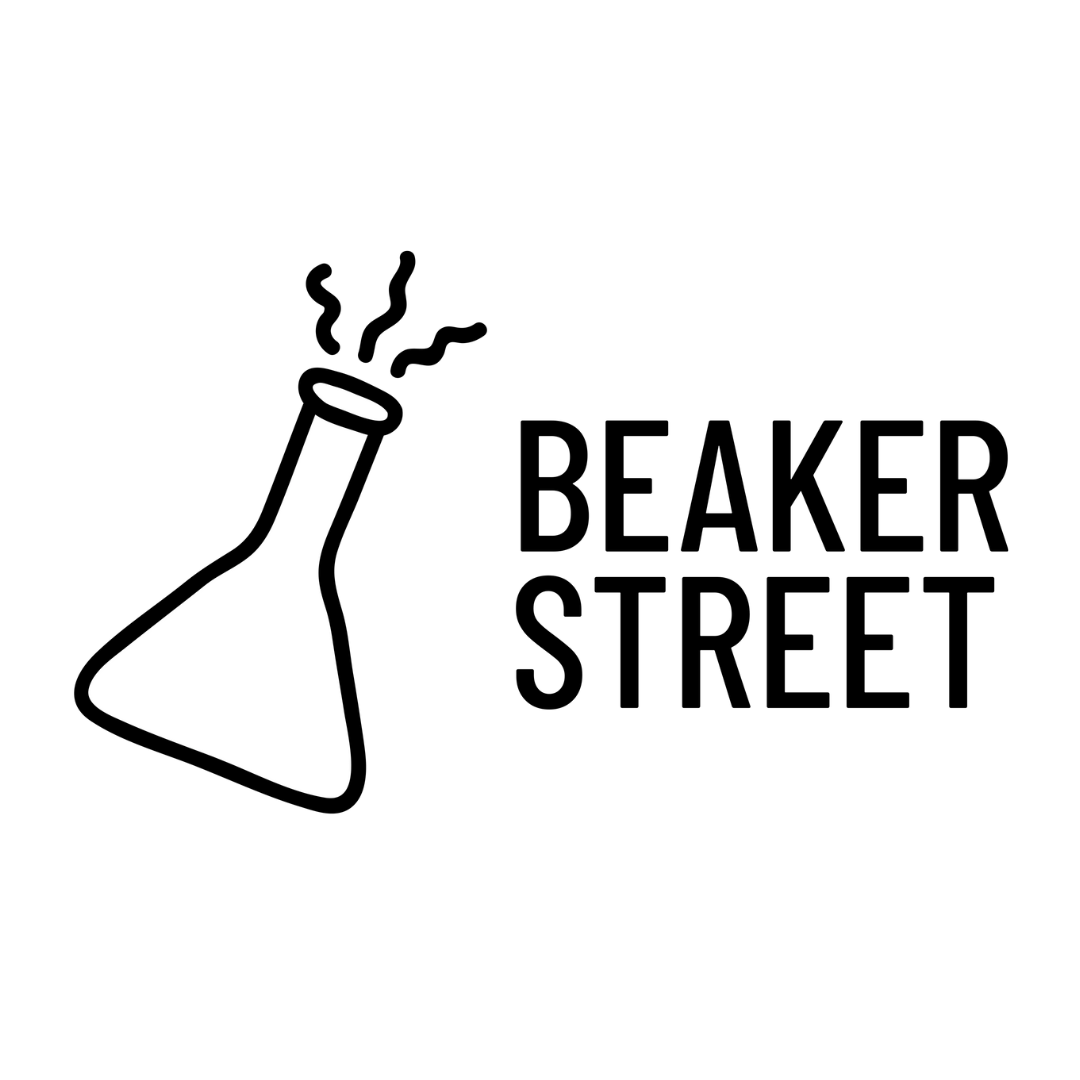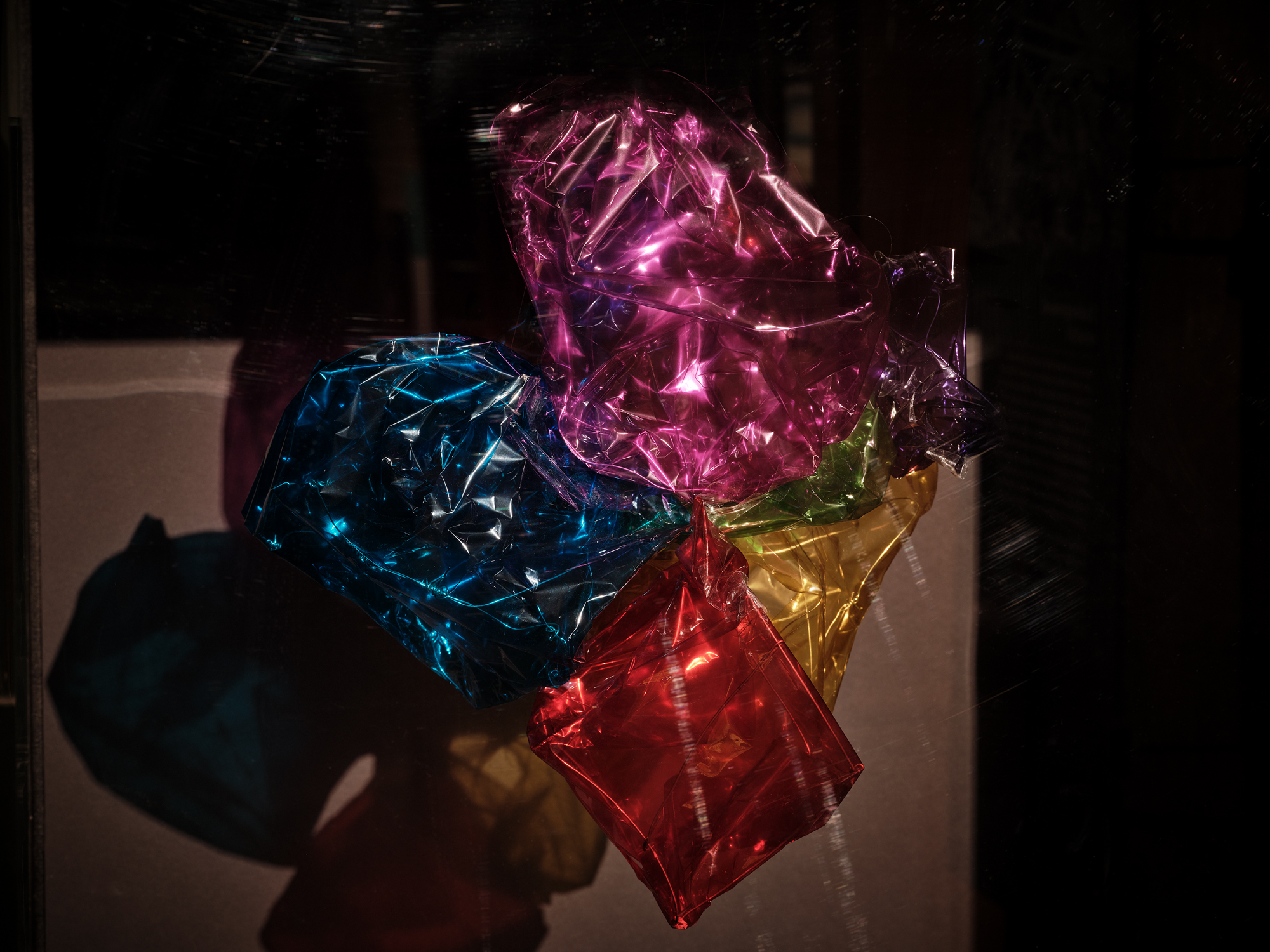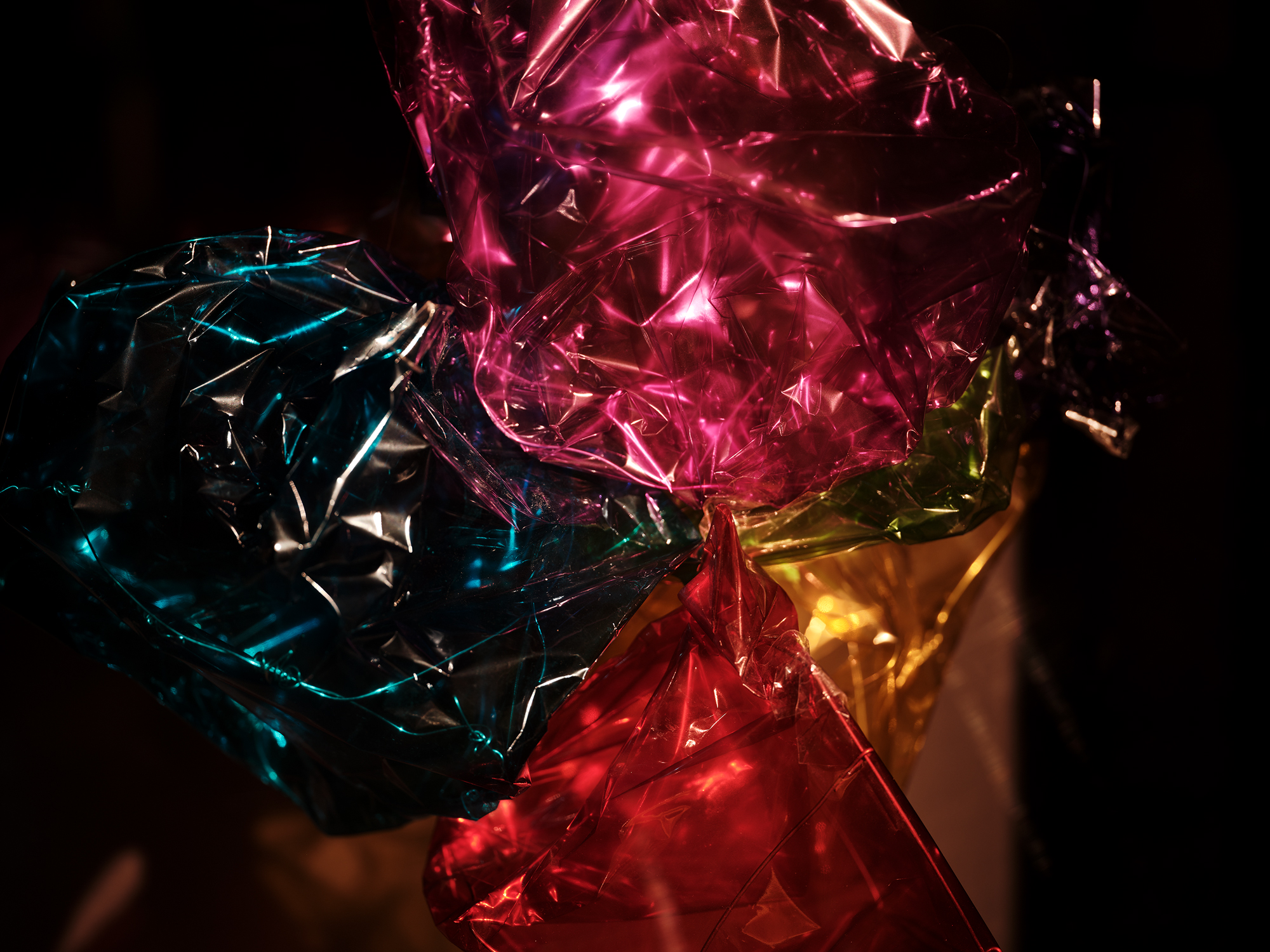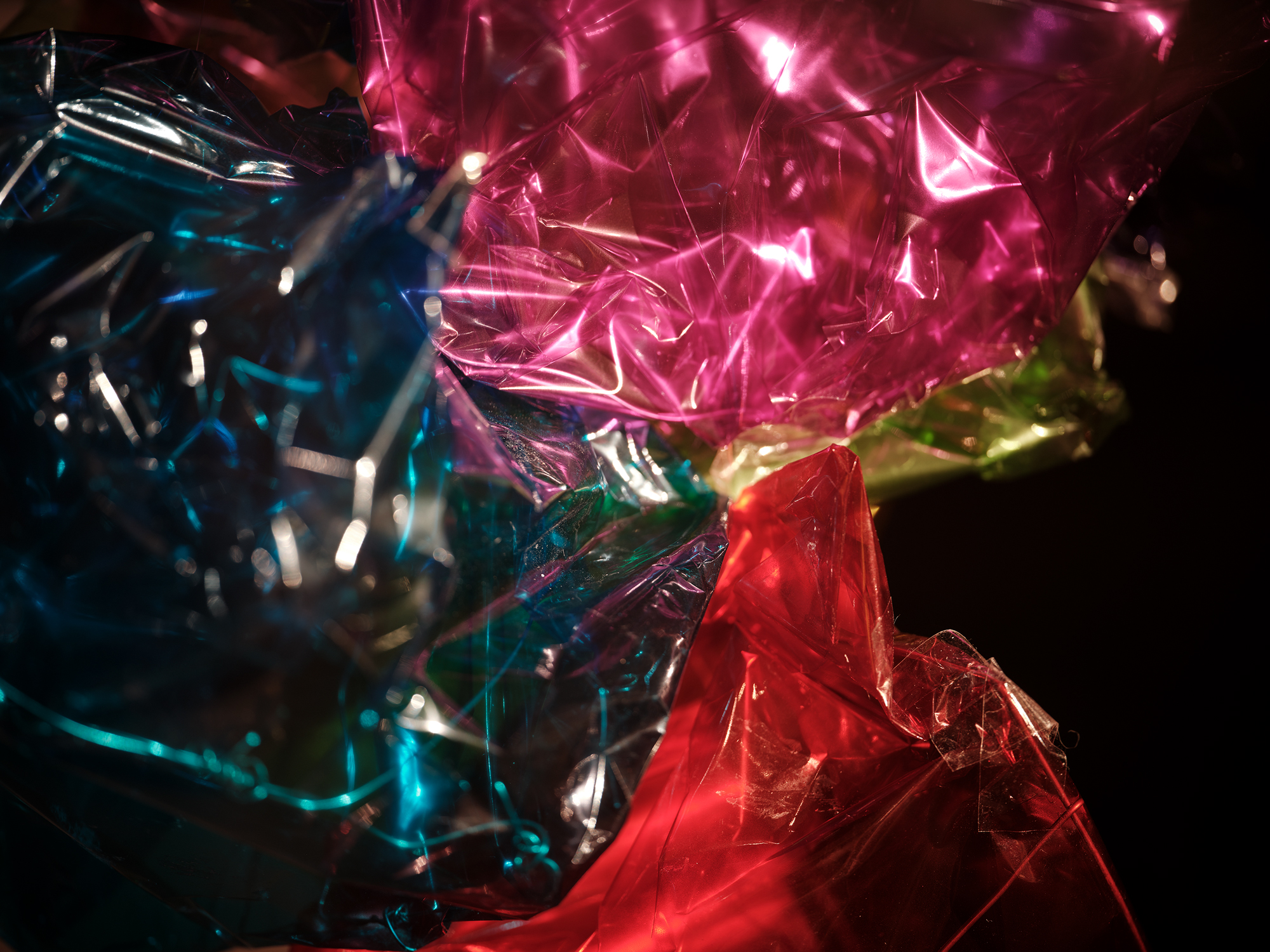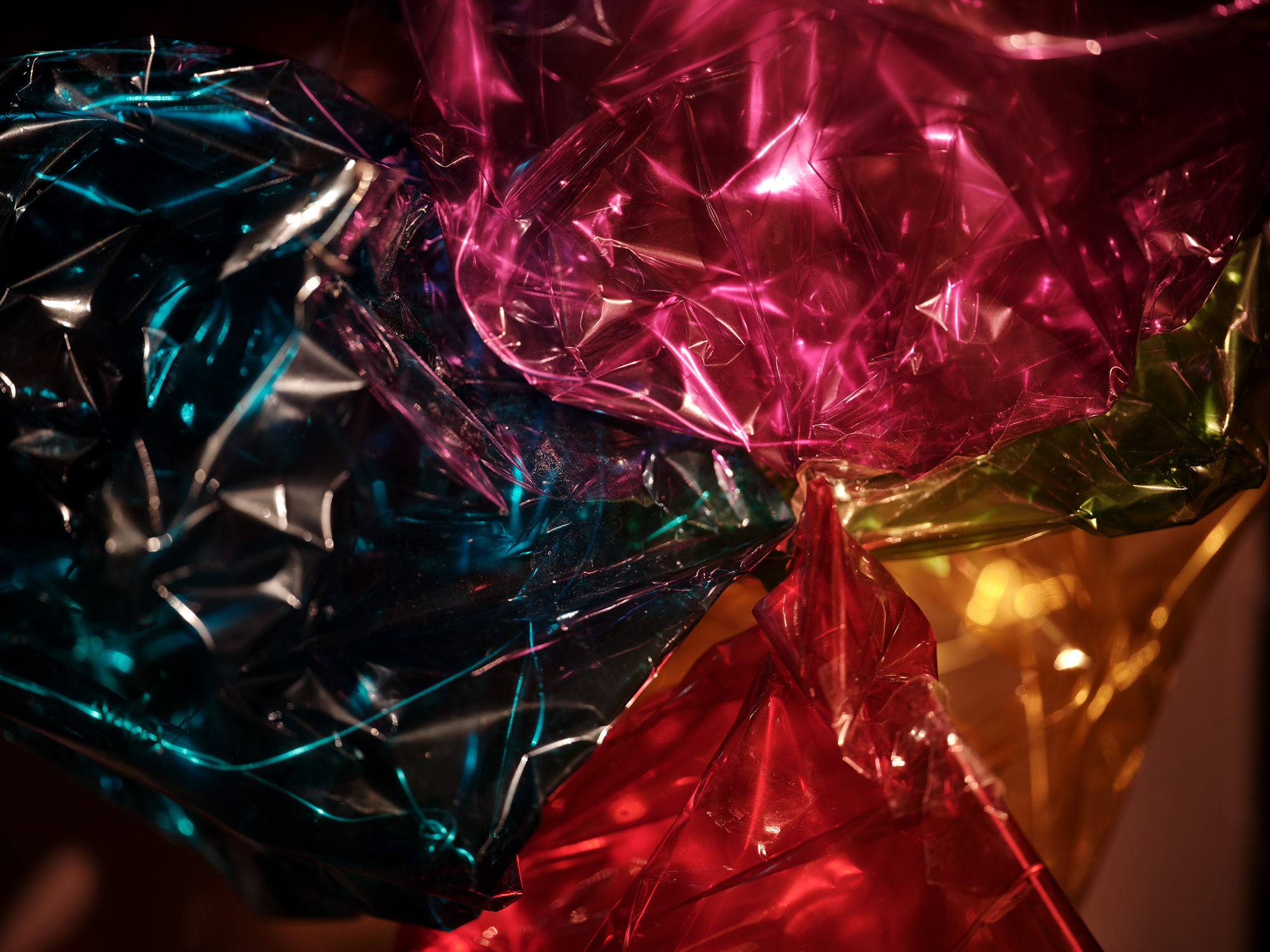Ancient Crystal Sediments
Hanna Sewell, Sacred Heart College
In collaboration with Dr Tom Williams, University of Tasmania
Artist’s Statement
The research I am investigating is the melting of the icecaps from global warming. The research aims to determine how much the ice caps will melt later this century if we continue to warm the planet. To do this, Dr. Tom Williams reconstructs how much of Antarctica melted in the past 3 million years, when temperatures and CO2 levels were similar to what they are now.
Through Tom’s research I have been able to convey the visual representations of ancient sediments that are found in the icecaps, which Tom uses for his work.
What I am mainly focusing on is what the sediments look like under the microscope, how they look like crystals and the ways the light can make them look from different angles.
My work is colourful paper mache shapes, made from lots of different colored tissue paper and cellophane, hung from the inside ceiling of a glass cabinet, with the sides and back being blacked out. The roof and the floor of the cabinet have lights coming up and down, illuminating the sediments, to make them look as though they are crystal-like, the way they appear under the microscope.
Objects such as the paper mache shapes represent the crystals, and the cabinet is representing the microscope. The crystals are hidden in mud, and the only way to see them is up close with the microscope.
Through my collaborative work with Tom, I have been able to grasp a deeper and wider understanding of how ice caps work, what they were like in the past and how global warming is aiding in the melting of the ice caps.
Through my depiction of ancient crystal sediments, hidden inside the cabinet, I hope to make the viewer curious about these tiny objects and the science of climate change.

Photographer: Peter Whyte
Project Gallery
THIS PROJECT IS CURRENTLY SUPPORTED BY:

The Fred P Archer Charitable Trust
THIS PROJECT IS PRESENTED BY:
